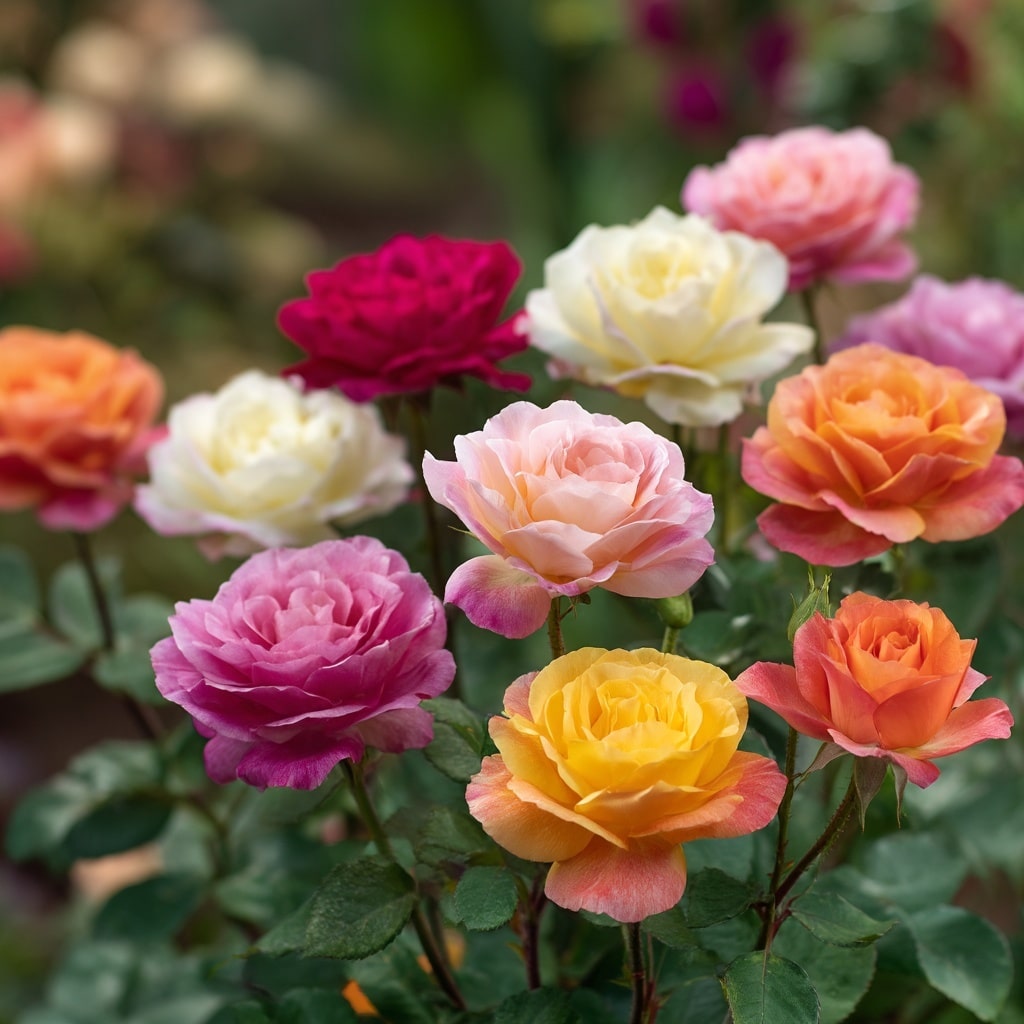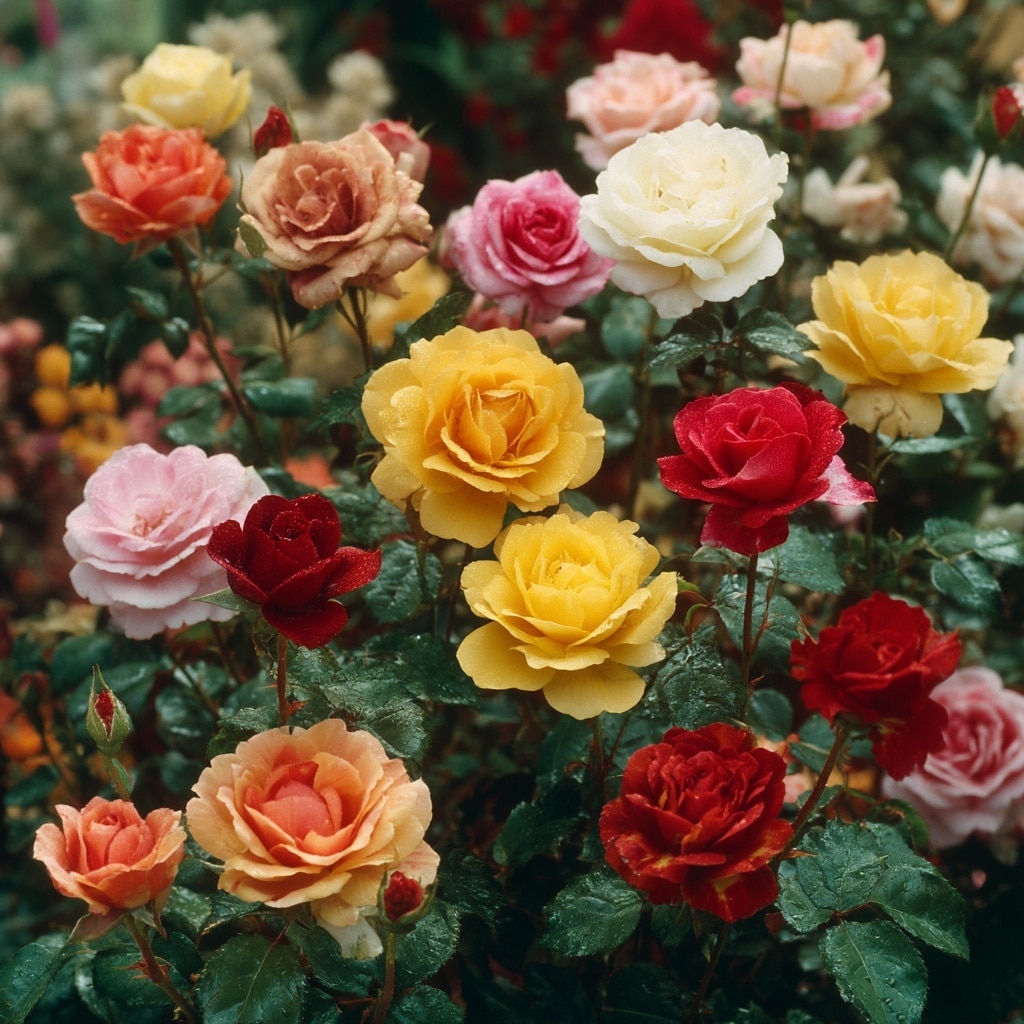Rose is more than just a flower—it’s a timeless symbol of beauty, love, and resilience. With over 100 known species, roses belong to the genus Rosa in the Rosaceae family and have captivated gardeners for centuries. Whether climbing a trellis or blooming in a backyard border, their diverse colors, elegant shapes, and rich fragrances make them a favorite in temperate gardens across the world.
Originating primarily from Asia, roses have adapted to various climates and continue to thrive through thoughtful breeding. From tiny, delicate blooms to full, showy flowers, this classic plant offers endless variety. But growing healthy roses requires understanding their needs, from soil preferences to pest management. In this guide, we’ll explore everything you need to know about roses—types, care tips, common challenges, and more—to help you grow thriving blooms season after season.
Table of Contents
Where Roses Grow: Natural Origins and Global Spread
The rose has deep roots across the temperate zones of the Northern Hemisphere, where it first flourished in the wild. While gardeners today may associate roses with well-manicured landscapes or bouquet arrangements, these plants actually hail from rugged, varied environments. The majority of wild rose species trace their origins to Asia, a region known for its botanical richness and diversity.
A smaller number of species naturally grow in parts of North America, Europe, and even North Africa. Despite their widespread distribution, roses have one thing in common—they thrive in moderate climates with well-drained soil and plenty of sunlight. Over centuries, horticulturists have taken advantage of this adaptability. Through selective breeding and hybridization, they’ve created countless rose varieties suited for gardens around the world.
This natural genetic flexibility allows the rose to bridge continents and cultures, becoming a universal plant beloved by gardeners, florists, and nature enthusiasts alike.
Physical Characteristics of the Rose

Every rose carries a unique charm, but most share a few unmistakable traits that make them easy to recognize and even easier to love. Roses can grow as upright shrubs, graceful climbers, or low trailing plants. Their stems, often lined with sharp prickles (commonly referred to as thorns), offer protection and support, especially in wild environments.
The leaves of a rose plant are typically arranged alternately along the stem and are pinnately compound—meaning each leaf is made up of multiple smaller leaflets, usually with jagged edges. While wild roses tend to have a simple five-petal structure, cultivated varieties often bloom with multiple layers of petals, forming the lush, full flowers so admired in modern gardens.
Roses also vary widely in size. Miniature types may have blooms smaller than half an inch, while some hybrid roses can grow flowers spanning over seven inches. Many varieties produce rose hips—small, round, berrylike fruits that range from red to orange and are rich in vitamin C. These hips are not only attractive but also edible, often used in teas and preserves.
Common Rose Pests and Diseases

Even the most beautiful rose isn’t immune to problems. Like many garden favorites, roses are vulnerable to several pests and diseases that can affect their growth and appearance if not managed properly.
One of the most common fungal threats is powdery mildew, which shows up as a whitish-gray coating on young leaves and stems. Left unchecked, it can stunt growth and reduce flower production. Another frequent issue is black spot, a disease that causes dark, round blotches on leaves, eventually leading to leaf drop and weakened plants. Rust, another fungal culprit, appears as orange or reddish pustules on the undersides of leaves and can quickly spread across rose bushes.
In terms of pests, aphids are the most persistent. These tiny insects feed on the sap of young shoots and leaves, often leaving them curled or distorted. While a few aphids won’t do major harm, infestations can severely impact new growth.
Regular pruning, proper air circulation, and natural pest control methods can help keep your rose garden healthy and blooming all season long.
Types of Roses: Species and Hybrids

There’s a rose for nearly every garden style, thanks to centuries of selective breeding and hybridization. While wild roses offer simple elegance, cultivated varieties bring a dazzling array of colors, forms, and blooming patterns. Most modern garden roses fall into a few key categories, each with its own appeal.
Hybrid Tea Roses
Perhaps the most iconic of all, hybrid tea roses are prized for their large, symmetrical blooms and long stems—ideal for cutting. These roses are the stars of florist shops and formal gardens, blooming repeatedly throughout the season in nearly every color imaginable.
Floribunda Roses
Floribundas are vigorous shrubs that produce clusters of flowers rather than single stems. They were created by crossing hybrid teas with polyanthas, resulting in hardy plants that bloom continuously and require less maintenance.
Grandiflora Roses
A newer class, grandifloras combine the best traits of hybrid teas and floribundas. They feature large, elegant blooms on tall, robust bushes, making them suitable for both landscape planting and bouquets.
Polyantha Roses
Compact and highly disease-resistant, polyantha roses are known for their dense clusters of small flowers. These hardy plants are excellent for borders and mass plantings, offering vibrant color with minimal fuss.
Climbing and Shrub Roses
Climbing roses can scale trellises, walls, and fences with support, adding vertical interest to any garden. Shrub roses, on the other hand, are ideal for filling large spaces with lush blooms and foliage.
Miniature Roses
Perfect for containers or small spaces, miniature roses grow just like their full-sized relatives but on a smaller scale. Despite their size, they’re often tough and long-blooming.
From elegant hybrids to rugged species roses, today’s gardeners can choose from thousands of varieties to suit their space, climate, and personal taste.
Conclusion

The rose remains a timeless garden favorite, cherished for its beauty, fragrance, and versatility. Whether you’re planting a fragrant hybrid tea or a hardy shrub rose, understanding their needs—from location to care and pest control—will help you enjoy healthy, blooming plants year after year. With so many types to choose from, there’s a rose that fits every garden style and skill level. Embrace the elegance of roses and let them become the blooming heart of your outdoor space.





